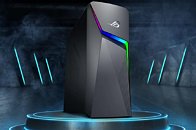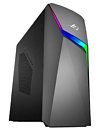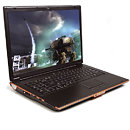
AMD Expands Commercial AI PC Portfolio to Deliver Leadership Performance Across Professional Mobile and Desktop Systems
Today, AMD announced new products that will expand its commercial mobile and desktop AI PC portfolio, delivering exceptional productivity and premium AI and connectivity experiences to business users. The new AMD Ryzen PRO 8040 Series are the most advanced x86 processors built for business laptops and mobile workstations. In addition, AMD also announced the AMD Ryzen PRO 8000 Series desktop processor, the first AI enabled desktop processor for business users, engineered to deliver cutting-edge performance with low power consumption.
With AMD Ryzen AI built into select models, AMD is further extending its AI PC leadership. By leveraging the CPU, GPU, and dedicated on-chip neural processing unit (NPU), new Ryzen AI-powered processors provide more dedicated AI processing power than previous generations, with up to 16 dedicated NPU TOPS (Trillions of Operations Per Second) and up to 39 total system TOPS. Commercial PCs equipped with new Ryzen AI-enabled processors will help transform user experience, offering next-gen performance for AI-enabled collaboration, content creation, and data and analytics workloads. With the addition of AMD PRO technologies, IT managers can unlock enterprise-grade manageability features to simplify IT operations and complete PC deployment faster across the organization, built-in security features for chip-to-cloud defense from sophisticated attacks, as well as unprecedented stability, reliability and platform longevity for enterprise software.
With AMD Ryzen AI built into select models, AMD is further extending its AI PC leadership. By leveraging the CPU, GPU, and dedicated on-chip neural processing unit (NPU), new Ryzen AI-powered processors provide more dedicated AI processing power than previous generations, with up to 16 dedicated NPU TOPS (Trillions of Operations Per Second) and up to 39 total system TOPS. Commercial PCs equipped with new Ryzen AI-enabled processors will help transform user experience, offering next-gen performance for AI-enabled collaboration, content creation, and data and analytics workloads. With the addition of AMD PRO technologies, IT managers can unlock enterprise-grade manageability features to simplify IT operations and complete PC deployment faster across the organization, built-in security features for chip-to-cloud defense from sophisticated attacks, as well as unprecedented stability, reliability and platform longevity for enterprise software.






